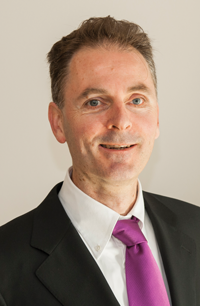Crime and punishment
 UCD Professor of Criminology Ian O’Donnell discusses rising prison rates and alternatives to custody with Stephen Dineen.
UCD Professor of Criminology Ian O’Donnell discusses rising prison rates and alternatives to custody with Stephen Dineen.
“People sometimes think that when the rate of imprisonment goes up that reflects the increase in the underlying level of crime,” O’Donnell tells eolas. “That isn’t the case.”
Ireland’s prison population has risen dramatically. In 1999 the first ‘World Prison Population List’ showed it to be 65 per 100,000 people: 20 percentage points below the EU-15 average. By 2011 it had risen to 100 people per 100,000.
Whilst the rate climbed only to the EU-15 average, it had risen by 53.8 per cent. This increase was eclipsed only by Greece (85.4 per cent), and was much higher than the average increase among the other 13 countries (16 per cent).
Equally noticeable is how most of this increase has been recent, according to O’Donnell. While there have been previous comparable surges (1983-1985 and 1997-1999), the imprisonment rate actually fell between 2002 and 2006. It then rose after the decision to increase prison capacity in 2006.
These calculations are based on average daily prison population figures (from Irish Prison Service reports) and CSO population estimates.
Using prison as a sanction is one of the reasons for the prison population increase. O’Donnell states: “For example, since the late 1990s in Ireland we’ve seen a move towards minimum sentences, sometimes mandatory, sometimes presumptive minimum sentences.” These have a “big impact”. An example is the ten year minimum sentence for possession of drugs.
A change in sentencing practice has contributed, “and that to some extent is driven by a change in the legislative environment.” Prisoners awaiting trial on remand, “a category of prisoner that didn’t really exist before the year 2000, when Cloverhill prison was opened” are also driving up the population. The 1996 constitutional change to broaden the scope for denying bail, and the use of prison to detain people during immigration cases have also contributed. The crime rate has impacted “to a much more limited extent than people think,” O’Donnell explains.
Furthermore, the length of time life sentence prisoners have been serving, prior to release, has been “growing quite considerably over the last couple of decades.” He adds: “So although there had been 300 or so life sentence prisoners: if each of those is held inside for an extra year then you’re effectively talking about another prison to accommodate [them]”. Hence there has been “a kind of silting up effect of long sentence prisoners”.
Political attitudes have changed in the last 10-15 years, he adds, “and that, I think, is related to the availability of money that could provide places.” Politicians in the 1980s “from time-to-time talked very tough about law and order but the resources of the State didn’t allow them to follow up on that” with new prisons.
When finance became available during the boom years, “expansion took place in a quite uncritical way.”
For O’Donnell, public attitudes are “much more complex.” They are not necessarily “as punitive as politicians think they are.” People want a “speedy response if possible, a measure of relief from law and order problems,” he says.
“Anti-social behaviour concerns people: it’s generally low-level offending.” There is a lot of public support for “rehabilitative, reformative measures above and beyond incapacitative controlling of them.”
Alternatives to prison
O’Donnell who is a chartered forensic psychologist, believes that Ireland should aim to have its prison rate at 20 percentage points below the EU average by 2017. This will be achievable with political commitment. “I think what really needs to be done is to de-centre the prison. Move the debate away from prison and its alternatives, because that keeps prison at the centre.”
Society needs to think about dealing with people, “according to the harm that they’ve caused and the seriousness of the offence”. Prison should be essential “for a very small minority of people who come before the courts” rather than “the default sanction for too many”.
He highlights the fact that last year “most people committed to prison were people who hadn’t paid their fines and a lot of the others were people who committed very minor offences.”
For those who perpetrate “serious kinds of violence, sexual assault and so on” prison is the appropriate sanction, he argues.
“The key thing here is to have a degree of proportionality between the punishment and the crime,” O’Donnell states. This means rank ordering crimes and punishments in terms of seriousness, “and try and ensure a kind of match across.”A
lternatives to prison include:
• fines “calibrated with the individual’s disposable income”;
• community service;
• probation with various conditions; and• suspended sentences.
For O’Donnell, “we should have a more hierarchical approach: where we’re reserving prison for the few cases that are too serious for any other measure.” A “degree of consensus” exists on “a broad hierarchy of punishment, with prison at the top and perhaps a fine at the bottom.”
In order to reduce the prison rate, legislation may be required, along with a “more imaginative approach taken to release of prisoners and then a whole plethora of measures that are to do with crime prevention and so on.”
He adds: “But the most effective way to bring the prison population down in the short-term is to look at release mechanisms and sentencing.”
Finland is another small country with a relatively high prison population. It decided to build a political consensus on reducing prison numbers and implemented a strategy “in the context of general social welfare policy”. For O’Donnell, “it shows that if a small country decides its level of imprisonment is too high it can take a series of actions that bring it down.”
Crime and technology
Technology is creating new potential for deviance, says O’Donnell, with a lot of modern-day fraud now occurring online. Web-based crimes may be “displacing more traditional forms of crime.”
This change, however, does not necessarily translate into increased official crime levels. As new technologies create new forms of criminal activity, it can take time for the law to catch up. Such crimes are not territorial, he adds, therefore “much more difficult to police and to prosecute.”
Solutions are not easily found. “These are difficult ones, but as patterns of criminal opportunity change patterns of crime will change with them. That’s always been the case.”
He draws the analogy: “When the railroads were introduced there was real concern that they were going to be bringing crime to parts of the country that had been insulated from it in the past.” For O’Donnell, “this is just part of society’s evolution.”





